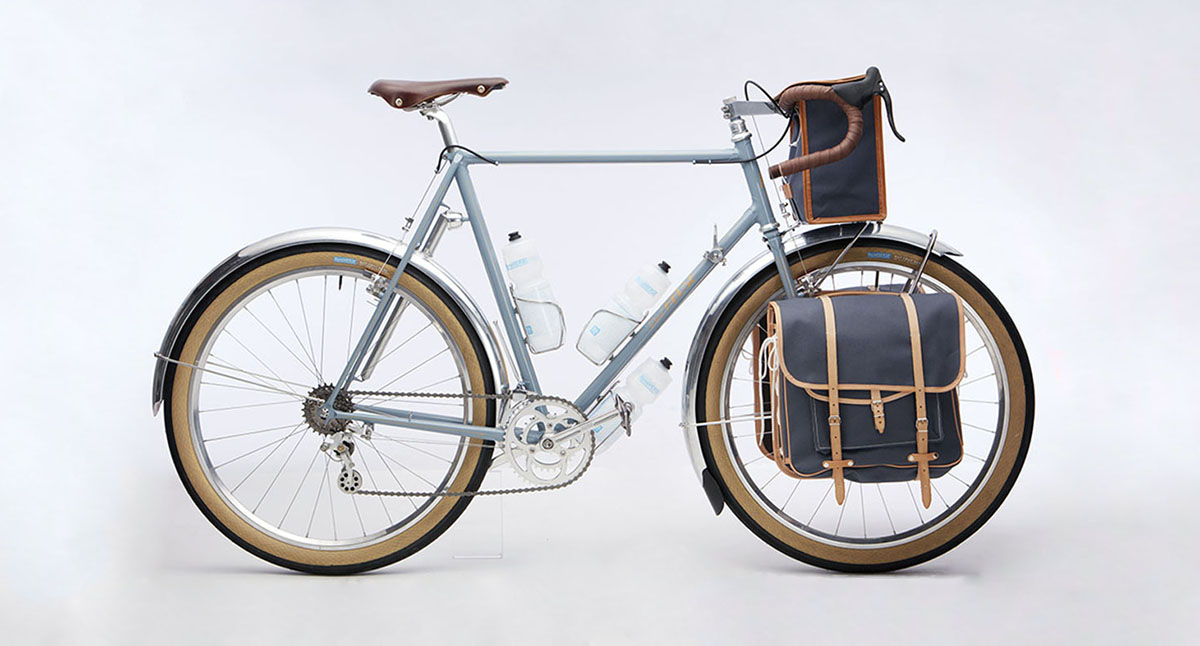One Bike for (almost) Everything
Our book about the technical developments of the last 15 years is called ‘The All-Road Bike Revolution.’ We don’t use the term ‘revolution’ lightly—modern all-road bikes truly have changed how we ride. We used to have multiple bikes: a road bike for going fast, a touring bike for carrying camping gear, a mountain bike for venturing off-pavement. Now we do all those things on the same bike. In fact, the German edition of our book—‘Ein Rad für Alles’—translates as ‘One Bike for Everything.’
Of course, many theoretical books have been written about cycling technology. What matters is whether the theory really works in the real world—where the rubber meets the road. Ted King’s XLent Adventure was an excellent opportunity for a ‘field test.’ Can one all-road bike really do most things we need from a bike?
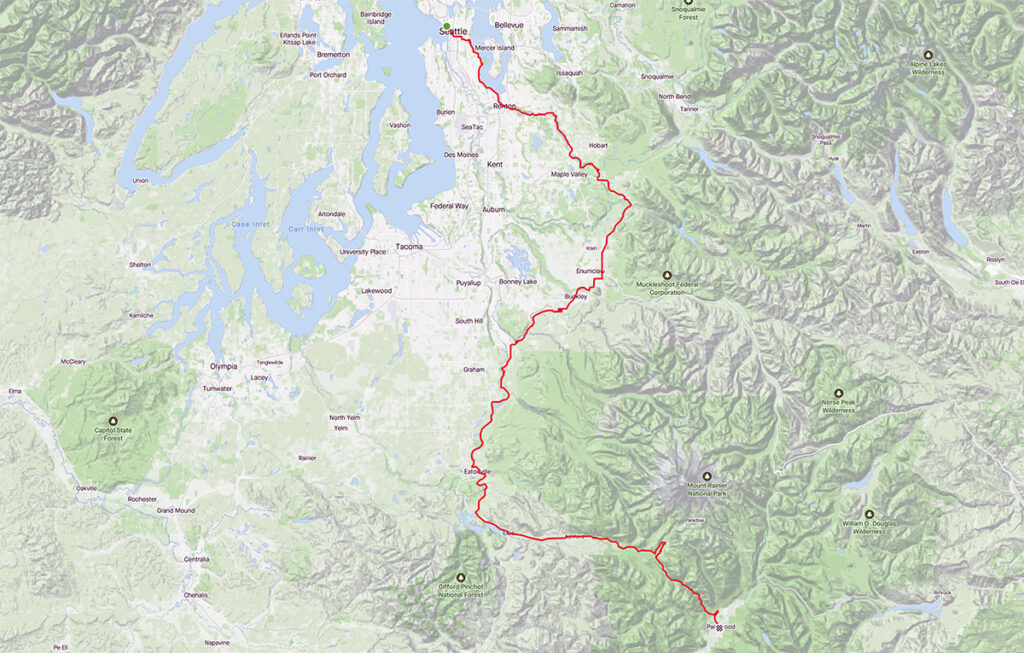
The plans for the weekend were ambitious, to say the least. Ted and I were going to ride from Seattle to Packwood on the other side of Tahoma (Mount Rainier) on Friday (above). There we’d meet the participants of the XLent Adventure for two days of riding in the Sawtooth Mountains and the Goat Rocks. It promised to be a lot of fun—and also a lot of miles (almost 300, or 480 km) and a lot of climbing (18,000 ft/5,500 m). And I had to haul my camping gear to Packwood.
I had just returned from Europe, so I only started packing for the adventure on Friday morning. I attached the low-rider rack to my Oregon Outback Rene Herse and inflated the tires. I stuffed tent, sleeping bag, pad, food, and a few clothes into the panniers. Then I headed out the door.
I was going to meet Ted at 11 a.m., and I’d already pushed that back by an hour, so I covered the 25 miles to our meeting point at a brisk pace. (Ted was staying with relatives who conveniently live on the way to the mountains.) On the Green River Trail, a speedy racer-type passed me, and I jumped on his wheel. Rather than try and shake off the ‘guy with fat tires and panniers,’ he was happy to give me a draft. It’s nice that the divisions between cyclists are disappearing, too, and not just the divisions between bikes.
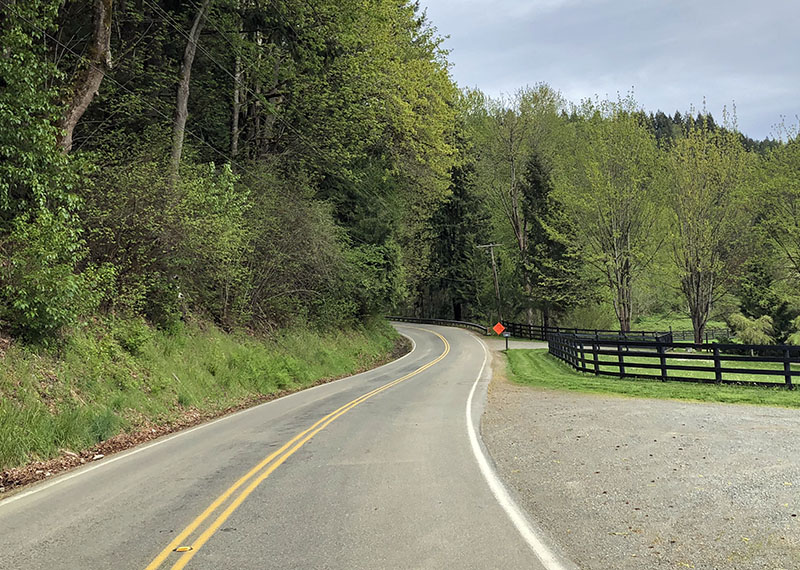
Ted was already waiting in the shade of a big tree, so there was no rest for me before we tackled Jones Road. This undulating road is great fun, but it’s not an easy ride. Generally sloping uphill, it’s punctuated by short, steep rises and fast descents. And I was riding with a well-rested Ted King. As I rose out of the saddle for the punchy uphills, I remembered the classic touring bike I used to ride. That bike carried most of its load on the rear, so riding out of the saddle, and rocking the bike from side to side, didn’t really help with climbing faster—it just unsettled the bike. And even in the saddle, that bike, with its stiff frame, didn’t perform like a high-performance road bike.
How different it was on the all-road bike with its front panniers. Not only was it easy and intuitive to get out of the saddle, but since the front wheel carries the weight, the superlight frame works well even with a full camping load. Of course, I noticed the extra weight I was carrying, as well as the aero drag of the panniers, but the feel of the bike was the same as it had been when I rode it in the Oregon Outback and Unbound XL. Which means our ride was a lot of fun.
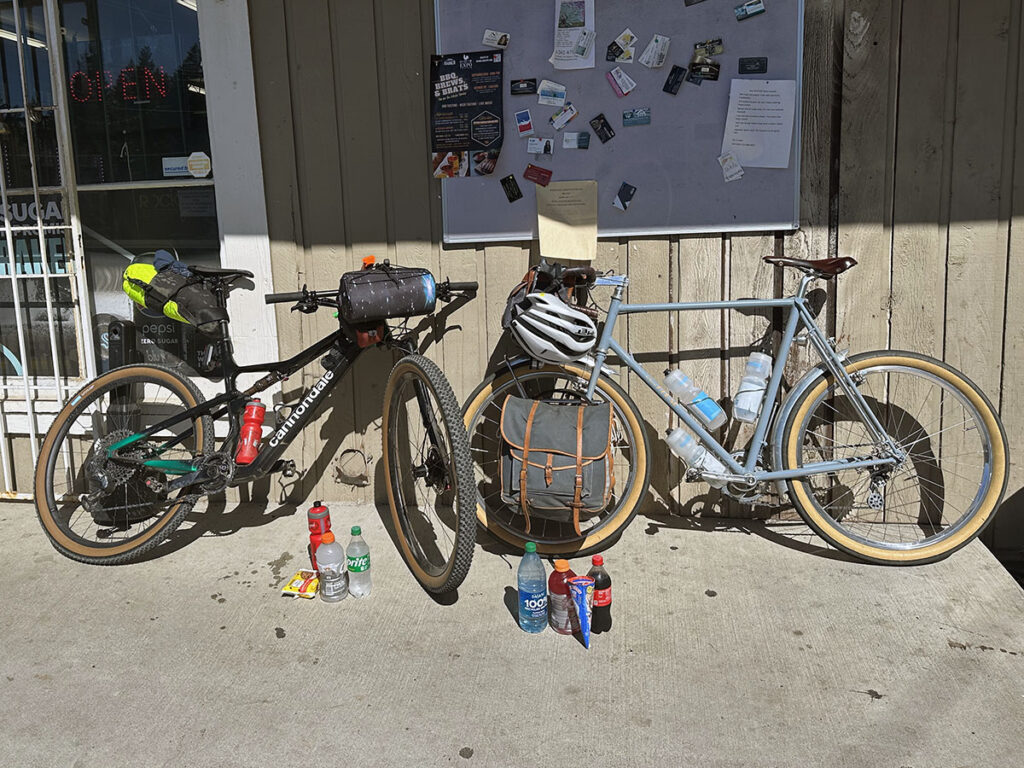
The miles passed quickly, but I did pay for my exuberance when my legs started cramping 100 miles into the ride. That’s the downside of a bike that ‘planes’ so well: It’s easy to overdo it a bit. In my defense, it was a hot day, I hadn’t ridden my bike in the three weeks since PBP, and I was riding with Ted King. A few brief stops to stretch my legs made the cramps manageable, and we continued our ride.
I had promised Ted dinner at the historic National Park Inn, but with our late start, time was tight. If we wanted to make it to Longmire by 8 p.m., when the restaurant closes, we had to keep up the pace on the long climb up the Nisqually Valley. Which we duly did: We made it to the lodge with 12 minutes to spare.
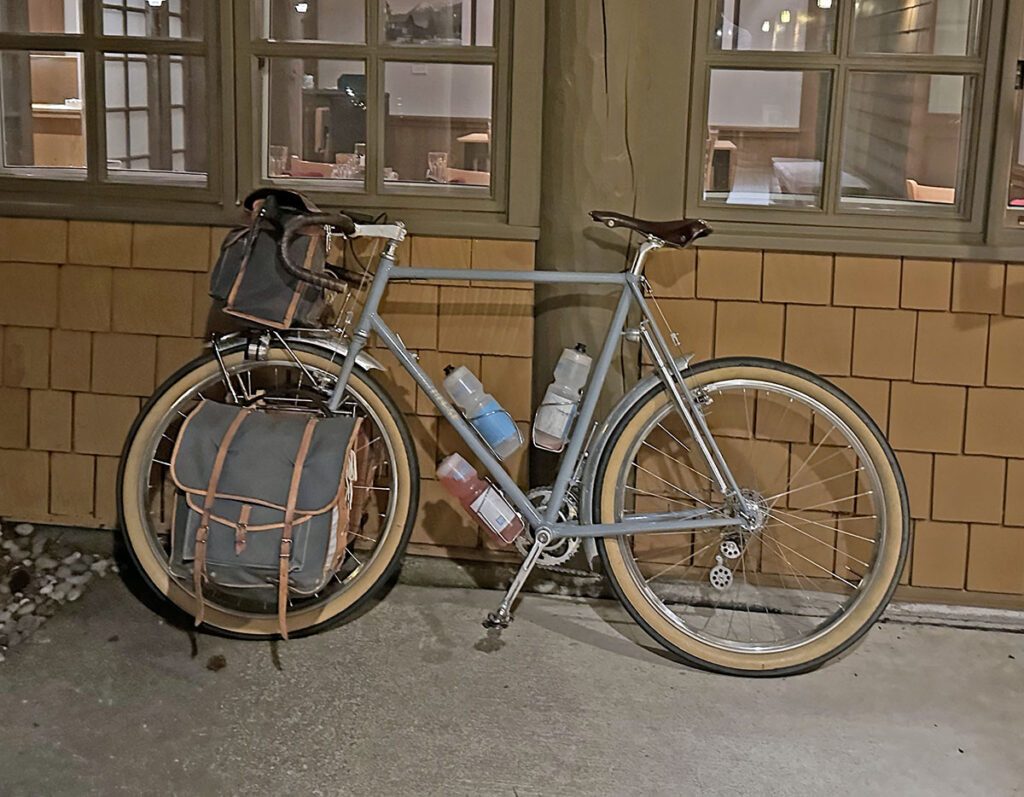
We didn’t talk about bikes during dinner—Ted is a great conversationalist with wide-ranging interests—but when we went back outside after a great meal and saw our steeds waiting in the dark, I realized that the all-road bike had lived up to its promise as a bikepacking bike. Rarely has carrying a camping load on such a long and challenging course been as speedy and as much fun.
After a quick dash down the winding Skate Creek Road (where the front-loaded all-road bike handled far better than a classic, tail-heavy touring bike), I set up my tent and went to sleep. (Ted slept under the stars.)
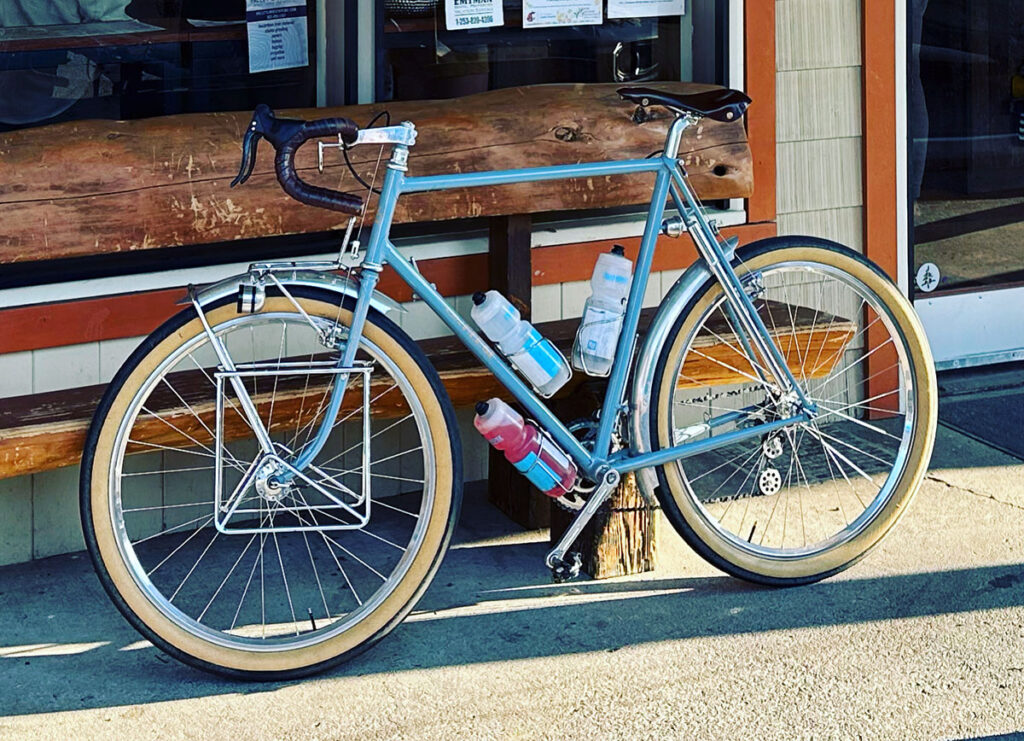
The next morning, it took all of two minutes and the removal of four bolts to take off the low-rider rack and convert the bike back to its Oregon Outback and Unbound XL spec. How would it stack up on the long climbs that were to come, both on gravel and on pavement?
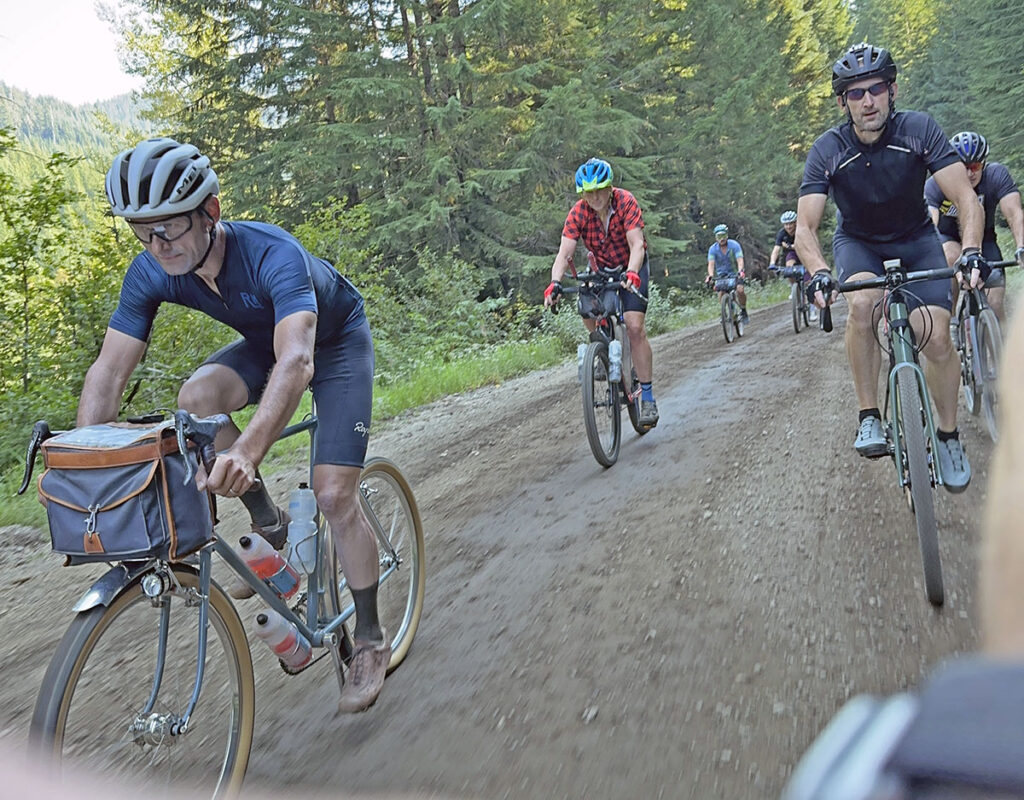
My legs felt the 140 spirited miles (225 km) of the previous day, but the bike encouraged me to stay with the fast group. We weren’t racing, but we also weren’t holding back, as evidenced by the Strava KOM three of us set on the long climb up Silver Creek Pass. Shifting the Nivex derailleur presented no handicap on these long climbs, even though many of the other bikes were equipped with electronic shifters.
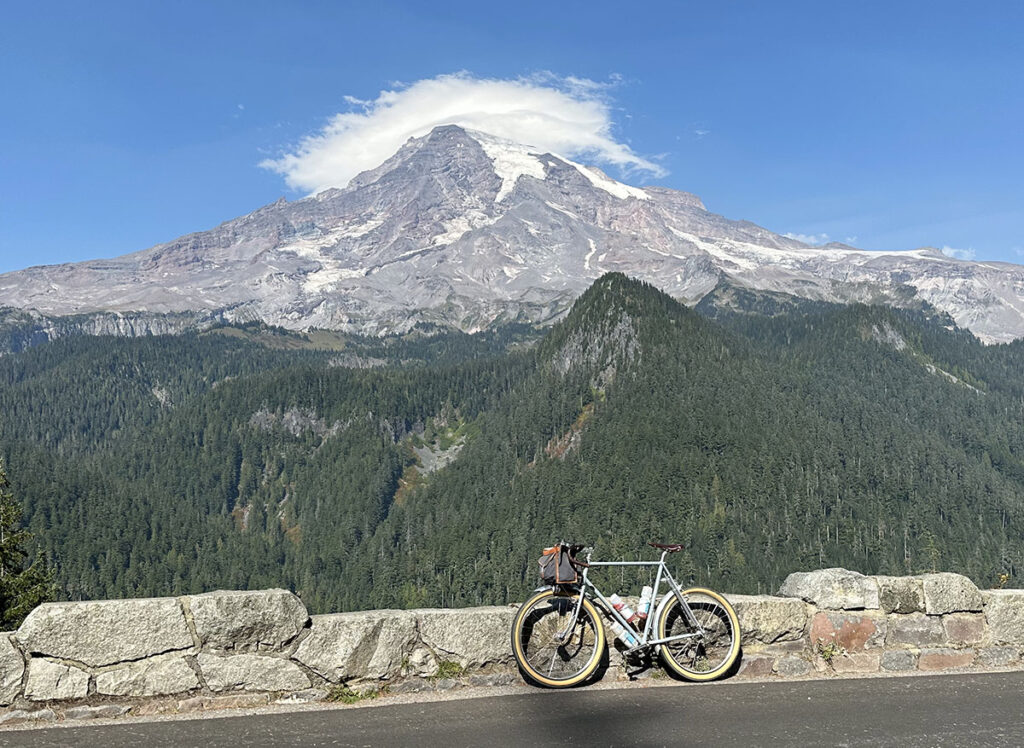
The climb to Paradise, high on the slopes of Tahoma, and the descent back down—all on pavement—were great fun, too. It’s an imperfect comparison, but my time up the big climb was right where it was when I came here a few years ago on 38 mm tires. It doesn’t seem like the 54 mm rubber put me at a disadvantage.
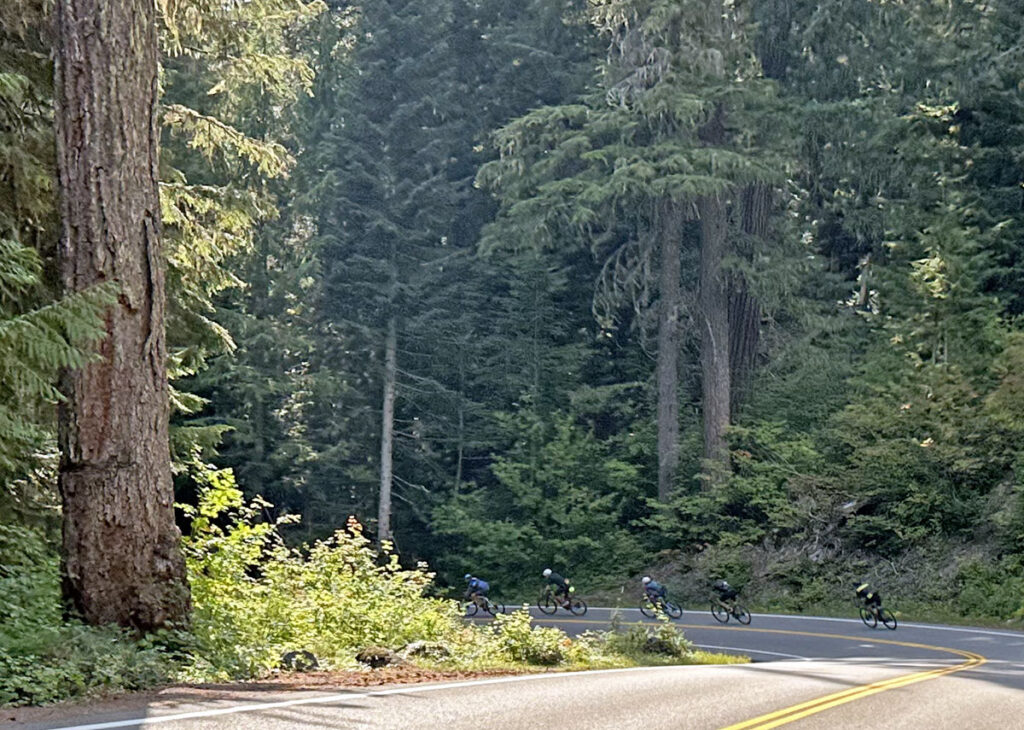
I enjoyed the extra traction of the ultra-wide tires when it came to catching the group on the twisty descent after taking a photo of them descending the big volcano.
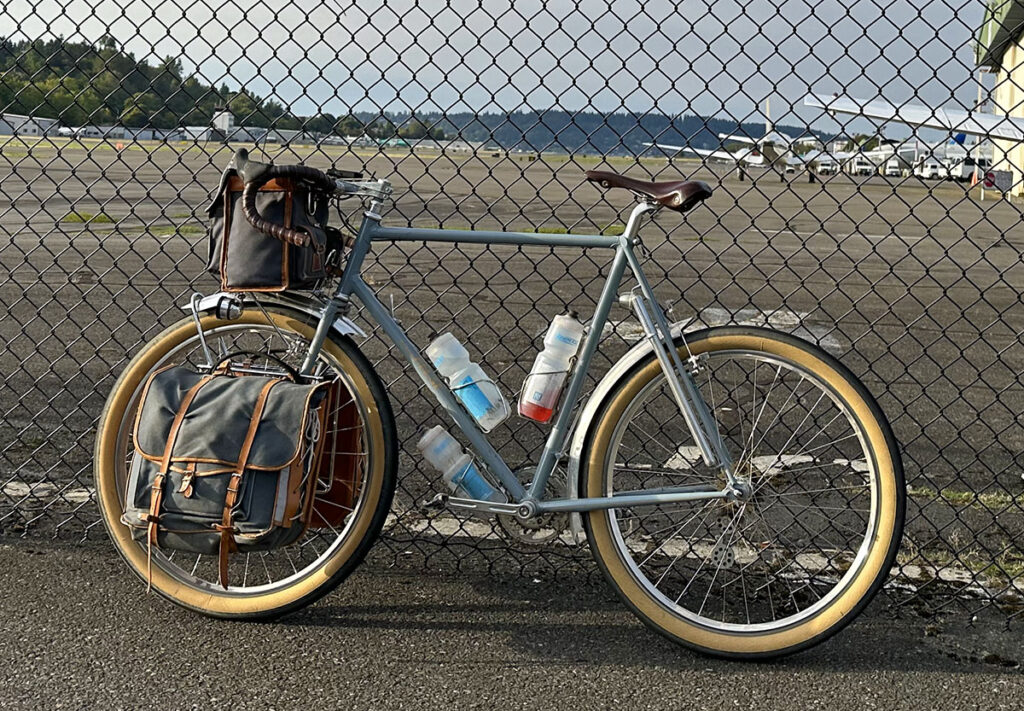
Fast-forward to Sunday afternoon, and the end of the XLent Adventure. Ted and Laura (who had joined us with their van) gave me a ride back to Maple Valley. They wanted to have dinner with their family before heading out of town the next morning, so driving all the way across Seattle to my house wasn’t a great option. Two minutes and four screws, and the low-rider rack was back on. I attached my panniers and enjoyed a pleasant spin back home, pushed along by a nice tailwind.
One bike for (almost) everything? Certainly the all-road bike was a perfect choice for carrying a camping load, riding rough gravel roads, as well as fast-paced climbing and descending on pavement. That describes 98% of the riding I do…
“Nothing new!” I hear some people say. True, in the past, many of us took our road bikes on trails. We tried to build touring bikes that could double as fast road bikes. And some of us rode mountain bikes on the road. ‘Underbiking’ in its many forms was a fun challenge, but most of us quickly returned to bikes that were optimized for their purpose. And adventures that included camping, as well as fast rides on gravel and pavement, were inherently compromised—if we attempted them at all.
During Ted’s XLent Adventure, I never felt like I was ‘underbiking’ on my all-road bike. Sure, on the paved 1+-hour climb up to Paradise, I might have shaved off a few seconds on a pure-bred racing bike… Outside of pro racing, that’s not even a noticeable difference. Most of all, it doesn’t affect how my bike feels and how much I enjoy the ride.
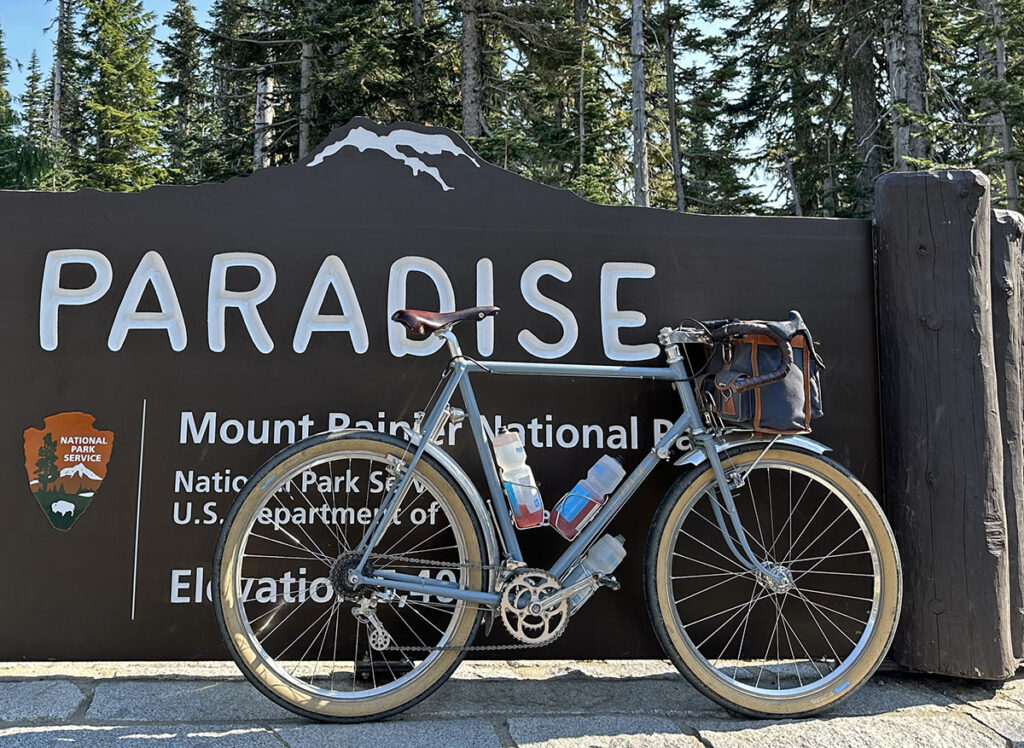
My Rene Herse is made from steel, but that’s not really important in this context. Great all-road bikes can be made from carbon, titanium and a host of other materials. What’s important is that the frame performs and feels like a good road frame, that the tires roll as well as the best road racing tires, and—for many riders—that the cranks have a narrow Q factor like the best road cranks.
Most bikes today aren’t designed for low-rider racks, but that’s not a deal-breaker. Bikepacking bags provide an alternative for carrying camping gear. They are probably a little more aero, but they also have less capacity and require more diligent packing. Those are minor differences—there’s not really a set pattern yet for what makes a great all-road bike.
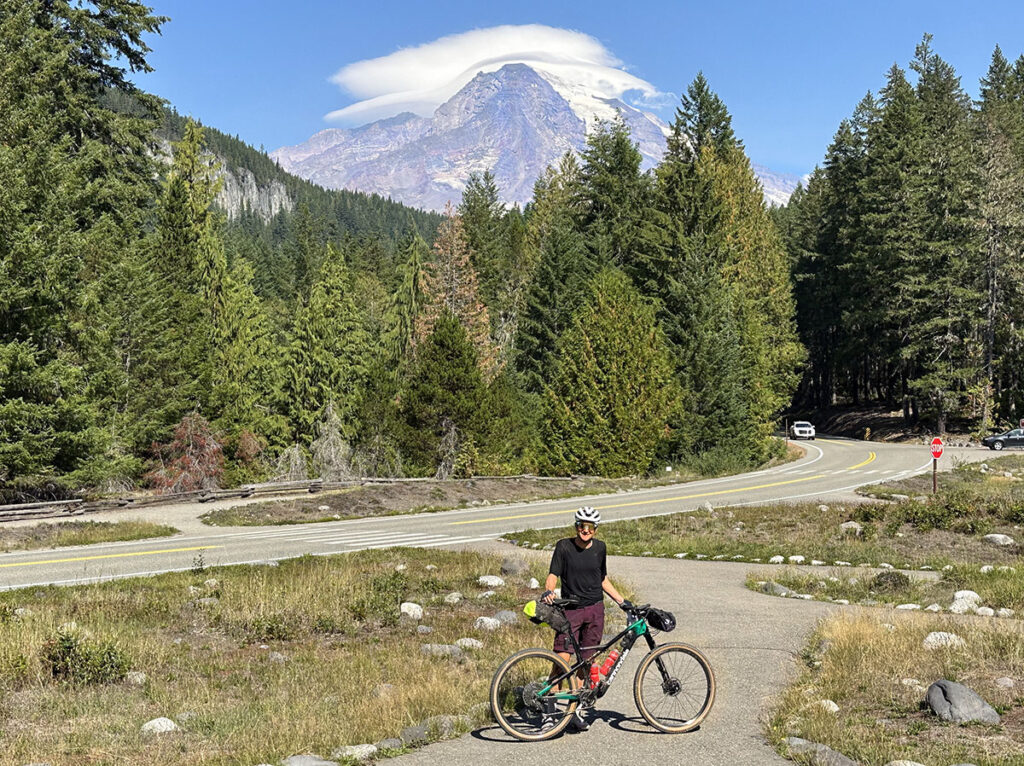
You may have noticed that Ted rode his mountain bike for the entire weekend. He would have ridden his all-road bike if he had brought it on this trip, but even on his mountain bike, he never seemed to work hard while the rest of us were approaching our limits. He is Ted King, the ‘King of Gravel,’ after all.
For mere humans, all-road bikes really deliver on the promise of ‘One Bike for Everything.’ The bike industry doesn’t talk much about these amazing capabilities. They’d rather sell you a quiver of bikes, each optimized for a relatively narrow range of conditions. That’s why we’ve put all our research into the book ‘The All-Road Bike Revolution.’ No matter how you ride and what you want from your bike, understanding how bikes work allows you to find a bike that is right for you—or upgrade your existing bike to make it ideal for your rides and adventures.
Photo credit: Chris Brooks (over-the-shoulder action shot)
Further Reading:
- Our book ‘The All-Road Bike Revolution’ explains how to get the most out of your bike and how to find one that’s optimized for all the riding you want to do.


